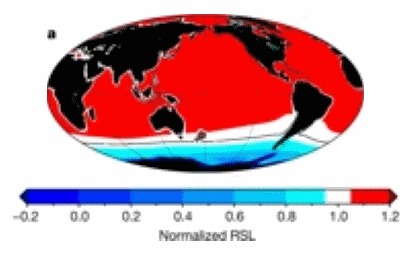Climate “abandonment zones” are coming to the American South – Whole counties across Florida and Central Texas could begin to see their total populations decline

By Abrahm Lustgarten
2 October 2024
(The New York Times) – When Hurricane Helene, the 420-mile-wide, slow-spinning conveyor belt of wind and water drowned part of Florida’s coastline and then barged its path northward through North Carolina last week, it destroyed more than homes and bridges. It shook people’s faith in the safety of living in the South, where the tolls of extreme heat, storms and sea level rise are quickly adding up.
Helene was just the latest in a new generation of storms that are intensifying faster, and dumping more rainfall, as the climate warms. It is also precisely the kind of event that is expected to drive more Americans to relocate as climate change gets worse and the costs of disaster recovery increase.
Researchers now estimate tens of millions of Americans may ultimately move away from extreme heat and drought, storms and wildfires. While many Americans are still moving into areas considered high risk, lured by air-conditioning and sunny weather, the economic and physical vulnerabilities they face are becoming more apparent.
One study by the First Street Foundation, a research firm that studies climate threats to housing, found that roughly 3.2 million Americans have already migrated, many over short distances, out of flood zones, such as low-lying parts of Staten Island, Miami and Galveston, Texas. Over the next 30 years, 7.5 million more are projected to leave those perennially flooded zones, according to the study.
All of this suggests a possible boom for inland and Northern cities. But it also will leave behind large swaths of coastal and other vulnerable land where older adults and the poor are very likely to disproportionately remain.

The Southern United States stands to be especially transformed. Extreme heat, storms, and coastal flooding will weigh heavily on the bottom third of this country, making the environment less comfortable and life within it more expensive and less prosperous.
The young, mobile, and middle class will be more likely to leave to chase opportunity and physical and economic safety. That means government — from local to federal — must now recognize its responsibility to support the communities in climate migration’s wake. Even as an aging population left behind will require greater services, medical attention and physical accommodation, the residents that remain will reside in states that may also face diminished representation in Congress, because their communities are shrinking. Local governments could be left to fend alone, but with an evaporating tax base to work with.
In December, the First Street Foundation created one of the first clear pictures of how this demographic change is unfolding. It looked at flood risk and migration patterns down to the census tract, across the country, and identified hundreds of thousands of so-called abandonment zones where the out-migration of residents in response to rising risk had already passed a tipping point, and people were making small, local moves to higher ground.
The research contains plenty of nuance ⎯ cities like Miami may continue to grow overall even as their low-lying sections hollow out. And the abandonment areas it identified were scattered widely, including across large parts of the inland Northeast and the upper Midwest. But many of them also fall in some of the very places most susceptible to storm surges from weather events like Helene: Parts of low-lying coastal Florida and Texas are already seeing population declines, for instance.
In all, the First Street report identified 818,000 U.S. census blocks as having passed tipping points for abandonment ⎯ areas with a combined population of more than 16 million people. A related peer-reviewed component of the organization’s research forecasts that soon, whole counties across Florida and Central Texas could begin to see their total populations decline, suggesting a sharp reversal of the persistent growth that Florida has maintained as climate pressures rise, by the middle of this century. [more]
Climate ‘Abandonment’ Zones Are Coming to the American South


